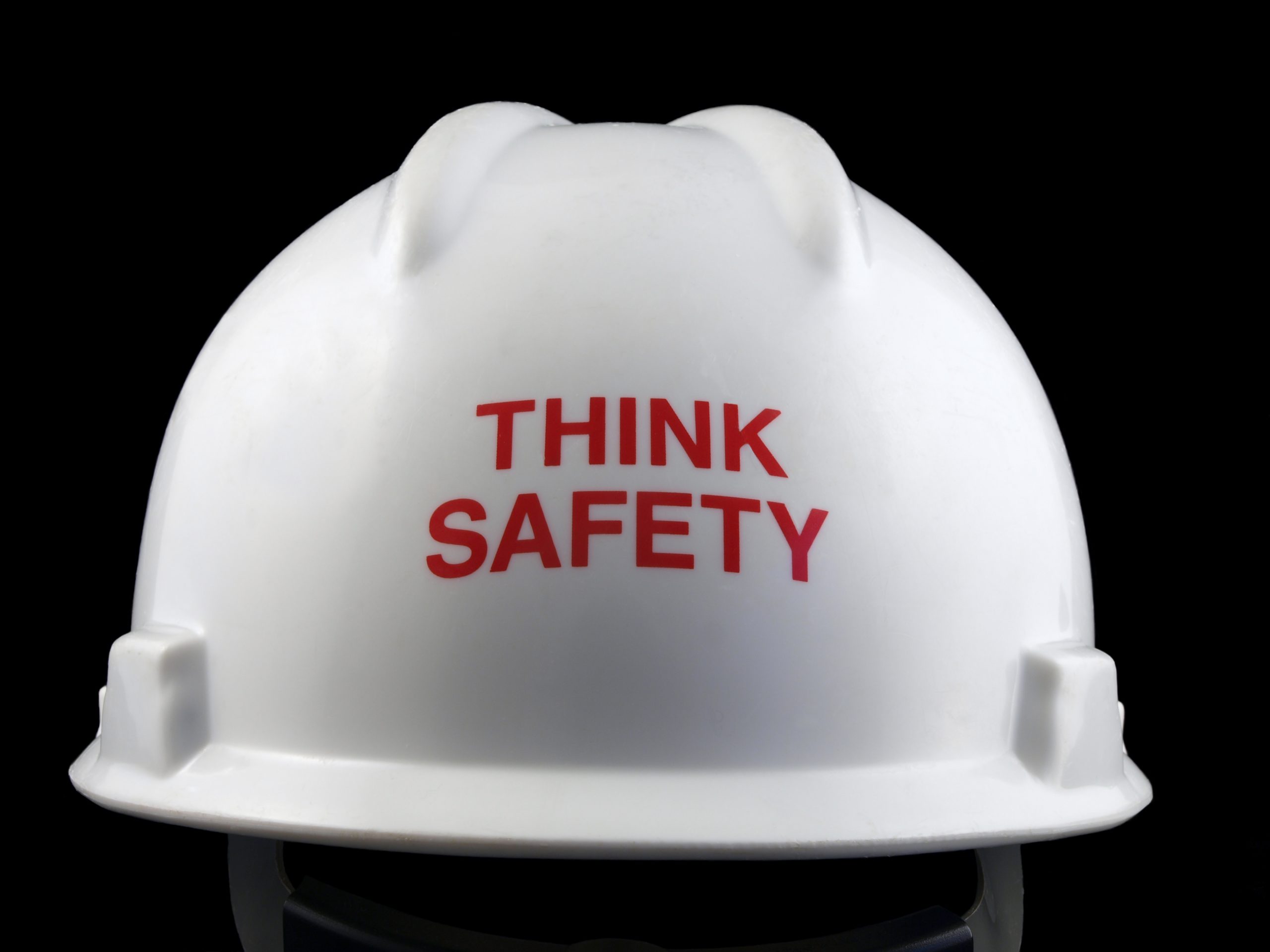Hard Hats Equal Head Protection
Injuries to the head due to falling objects or bump hazards are often serious and have been known to be fatal. Wearing a hard hat not only protects the top of your head, it can also protect those things attached to your cranium. Such items include your eyes, ears, nose, and mouth. Too often employees perceive the hard hat as just “something else they make me wear” and fail to recognize the full importance of this critical piece of personal protective equipment.
In a study conducted by the Bureau of Labor Statistics, it was reveled that the vast majority of employees who suffered impact injuries to the head were not wearing hard hats and were noted to have been performing their normal job duties. In addition, this same survey showed that most of these same employees were not required to wear hard hats by their employers. In the Occupational Safety and Health Standard, Personal Protective Equipment, 1910.135(a)(1) it states; The employer shall ensure that each affected employee wears a protective helmet when working in areas where there is a potential for injury to the head from falling objects.
In addition, 1910.135(a)(2) states; The employer shall ensure that a protective helmet designed to reduce electrical shock hazard is worn by each such affected employee when near exposed electrical conductors which could contact the head, to comply with hard hat regulations.
What does that tell us? It really does not matter if employees don’t recognize the importance of hard hat safety. The employers must take the steps to protect them, like it or not. This can be done by requiring the use of hard hats. When do we need to require them to be worn?
- If there is a possibility that a falling object may strike the employee on the head.
- Where fixed or protruding objects may lead to the employee striking his or her head against such object.
- Electrical hazards that the employee’s head may contact.
So how do hard hats protect us? There are a variety of ways this simple device can prevent injuries.
The first feature that most of us recognize immediately is the rigid shell designed to resist and or deflect blows to the head. Think about falling objects striking the hard hat instead of the head. This is pretty simple to understand, right?
The second feature, the suspension system, is also pretty apparent but is sometimes not completely understood. This system is designed to be a sort of shock absorber and the user must keep a safe distance between the head and the shell, approximately an inch to an inch and a half. However, employees will occasionally use this area to store such things as cigarettes, lighters, keys, etc. This defeats the purpose of the safety zone and may lead to a serious injury if these stored materials are forced into the skull in the event the hard hat is struck by a falling object.
Some hard hats also serve as an insulator against electrical shock. However, not all have this protection and those working with or near electrical hazards must ensure they have the properly rated hard hat prior to beginning work.
The fourth feature of a hard hat is often overlooked. Hard hats can prevent splashes, drips and or spills from touching your scalp. In addition, the brim helps to prevent spilled or splashed liquids from running into your eyes. Therefore, wearing the hard hat with the brim to the back renders this feature useless. Why are employees wearing their hard hats in this fashion? Good question, and without a good answer employers should require it to be worn brim forward in order to utilize this hard hat safety protective feature.
Hard hats can also be very helpful in the implementation of additional PPE such as face shields, goggles, and hearing protection. Purchasing a face shield that mounts to the hard hat, instead of one designed to fit directly on the head, allows the employee to protect his or her face without sacrificing the protection a hard hat provides.
Now that you have decided to require the use of hard hats, are you done? Actually you have just started! By requiring the use of hard hats you must now train your employees how to wear, maintain, and inspect them. If the shell is cracked, deformed or perforated, it must be taken out of service. Other signs of damage include a dull surface or flaking and or chalking of the shell. Hard hats must be inspected daily and replaced if damaged or expired. Yes they do expire. Check the manufacture’s specifications for determining the expiration date of your hard hat(s).
Employees must also be informed to clean their hard hats. Only use soap and water for proper cleaning. Never allow the use of chemical cleaners or solvents, they may weaken the shell and reduce the protective factor.
Your brain is the best PPE you have so be sure to protect it and use it!








